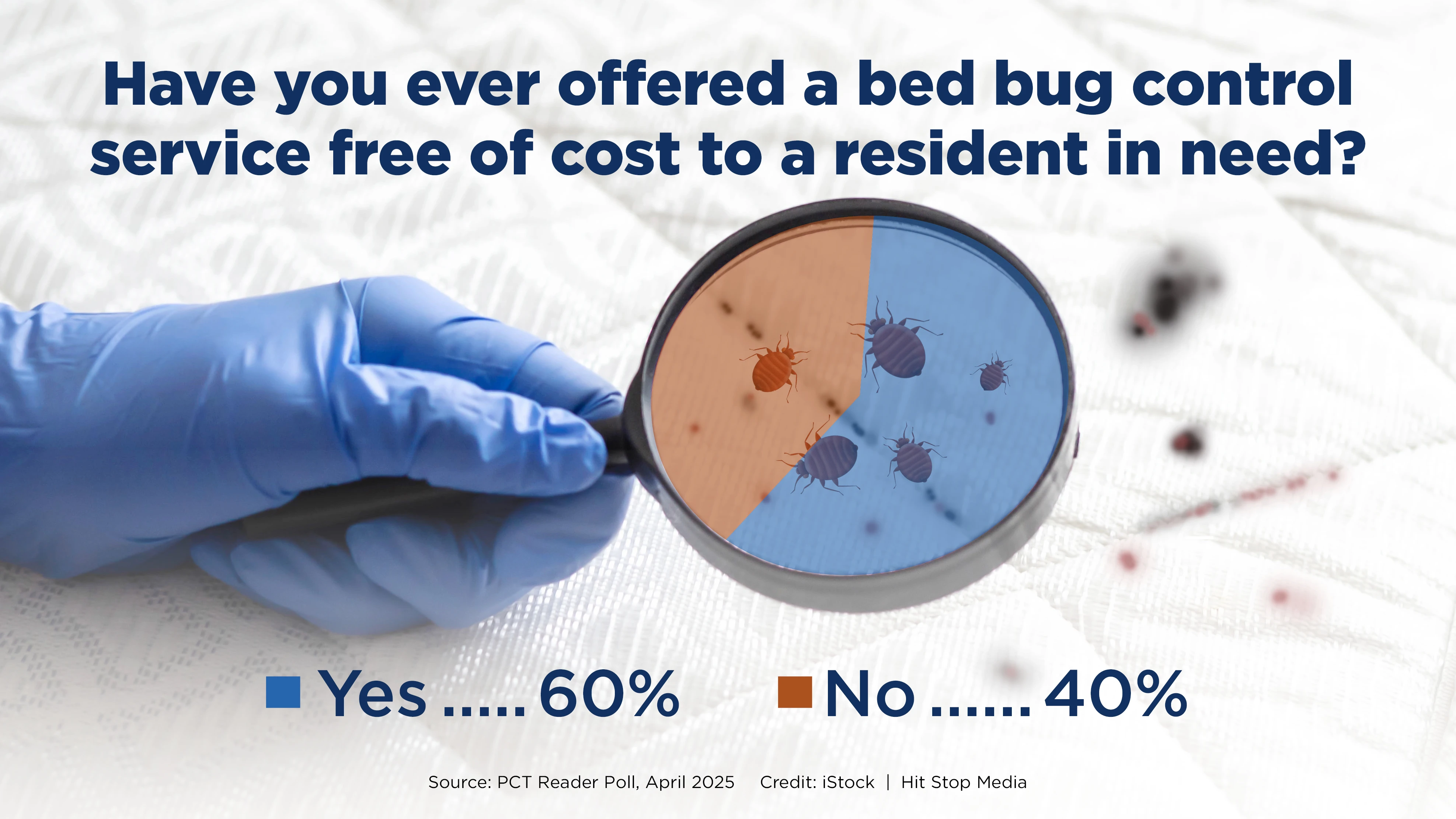I want to share with you a little bit about what goes into creating PCT and why we do what we do. One of the goals of our editorial and graphics staffs is to work on upcoming PCT covers far in advance of publication.
A few months ago, when we began talking about our Annual Ant Control Issue, we knew we wanted a dynamic ant image. (We didn’t use an ant on last year’s Ant Control Issue because we bumped that cover to feature the late-breaking story about Orkin’s purchase of Western Pest Services. So it was even more important that we have a great image this year since we hadn’t had an ant photo on the cover since April 2003.) We contacted several photographers and created a few different versions of the April cover during the past few months. But the one we liked best was the photo by Tom Myers of Tom Myers Photography/All-Rite Pest Control, Lexington, Ky. Tom is a wonderful photographer who travels around the world taking pictures for National Geographic and other prestigious organizations.
The only problem was that we didn’t know what kind of ants were in the photo. When I asked Tom what species they were, and if they were pests in the U.S., he said, "Well…these were shot in Southeast Asia. But yes, they could conceivably become a pest here (if we think Asian ladybug, Asian longhorn beetle or Japanese beetle). Many pests travel as much as I do. Just think of all the new and exciting ant species that have been introduced into the United States in the past few years."
His e-mail got me thinking. Some of the most important structural pests we face here in the United States were brought into this country from other parts of the world (Formosan termites, red imported fire ants, etc.). And with today’s international travel, any insect pest from anywhere potentially could show up at your front door. Certainly there’s no way you or your technicians could know every pest out there. But if we pay attention to trends and listen to what pest control experts are saying, we may have a leg up on pests that seem to appear out of nowhere — and we’d know what they are and how to treat for them accordingly.
Please take a few minutes to read the story on page 58 (based on a presentation by Jeff Tucker) about invasive ants. There he reviews five ants: the rover ant (Brachymyrmex spp.), the little fire ant (Wasmannia auropunctata), the Caribbean crazy ant (Paratrechina pubens), the European fire ant (Myrmica rubra) and the white-footed ant (Technomyrmex albipes). You may or may not be familiar with these ants, but it would be wise to keep this information handy so you’re prepared in case a new pest shows up in your neighborhood.
We obviously decided to use the photo of the ants Tom Myers shot in Southeast Asia. I love the crisp nature of the photo, as well as the fact it illustrates an important behavioral characteristic of ants — trophallaxis. (If you think you know what kind of ant these are, e-mail me at jdorsch@giemedia.com. If we can confirm your answer, we’ll send you a free PCT Technician’s Handbook.)
In his e-mail to me Tom wrote, "I am on my way to Honduras on Friday if you want some photos of any future invaders." We’re relying on Tom — and all of you — to keep an eye out for any invasive pests you might encounter.
WANT MORE?
Enter your email to receive our newsletters.

Explore the April 2005 Issue
Check out more from this issue and find your next story to read.
Latest from Pest Control Technology
- Target Specialty Products, MGK Partner for Mosquito Webinar
- Cockroach Control and Asthma
- FORSHAW Announces Julie Fogg as Core Account Manager in Georgia, Tennessee
- Envu Introduces Two New Innovations to its Pest Management Portfolio
- Gov. Brian Kemp Proclaimed April as Pest Control Month
- Los Angeles Ranks No. 1 on Terminix's Annual List of Top Mosquito Cities
- Kwik Kill Pest Control's Neerland on PWIPM Involvement, Second-Generation PCO
- NPMA Announces Unlimited Job Postings for Members






